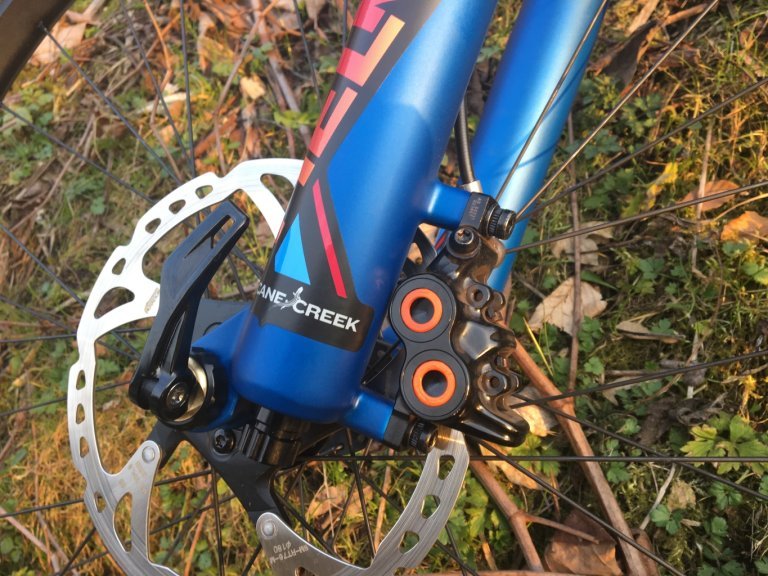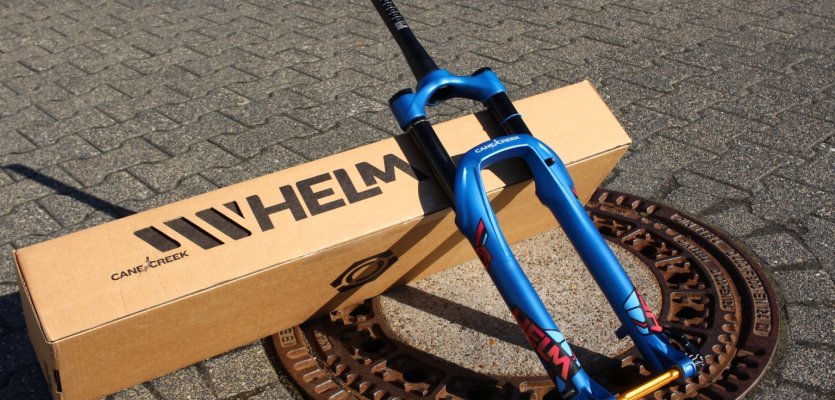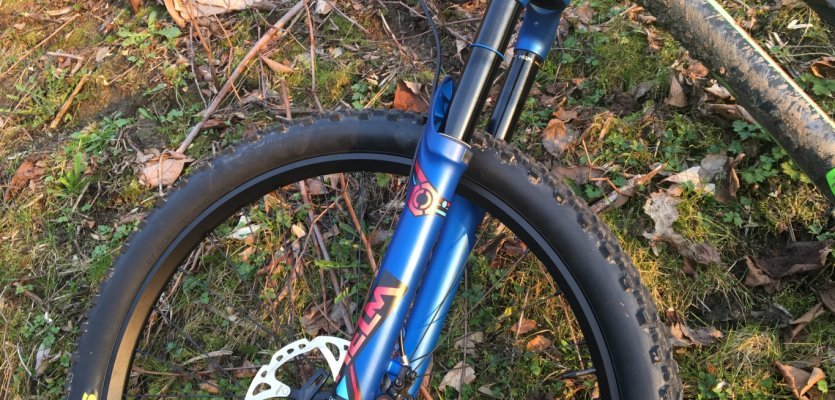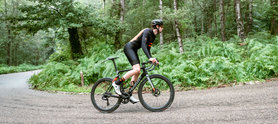
Review: Cane Creek Helm Suspension Fork
Known for quality headsets, seatposts and rear shocks, Cane Creek debuted a high-end suspension fork for Trail and Enduro riding. Here is Benny’s review.
What’s in a name? From the first moments on the trail, I realised that Cane Creek’s new fork not only puts the rider in control, it also literally swallows the big hits while smoothing out uneven ground, turning the navigation of my vessel into pure joy.
Let's look at the facts
| Specifications | |
|---|---|
| Application | All Mountain, Enduro |
| Travel | 160 mm |
| Wheel Size | 27.5" (650b) |
| Type | Air |
| Steerer Tube | 1 1/8" - 1.5" tapered |
| Axle Type | Thru-axle with quick release (15 x 110 mm) |
| Brake Mount | PM 7 (180 mm), Disc PM6 (direct mount 160 mm) |
| Offset | 44mm |
| Rotor Size (max.) | max. 200 mm |
| Compression | high-speed and low-speed (10/20 Clicks) |
| Rebound | low-speed (15 clicks) |
| Remote | No |
| Trave adjust | No |
| Weight | blue / 160 mm / 1.5 tapered / 15 x 110 mm : 2070 g |
First look and feel
The Cane Creek engineers have taken their vast experience from designing rear shocks to the front of the MTB. This made a whole lot of sense to me and I couldn’t wait to try out the result. Although taking on the likes of RockShox, Fox and Öhlins, to only name a few, won’t be easy for the company from North Carolina, it’s about time that somebody gets in the mix.
Weighing in at 2070g, the Helm is a little heavier than a RockShox Pike, just about equal to a Lyrik.
The dials for high and low-speed compression have a solid feel to them and are easy to adjust. Each click registers noticeably. This haptic feedback makes damping tuning so much easier as counting the clicks is hassle-free.
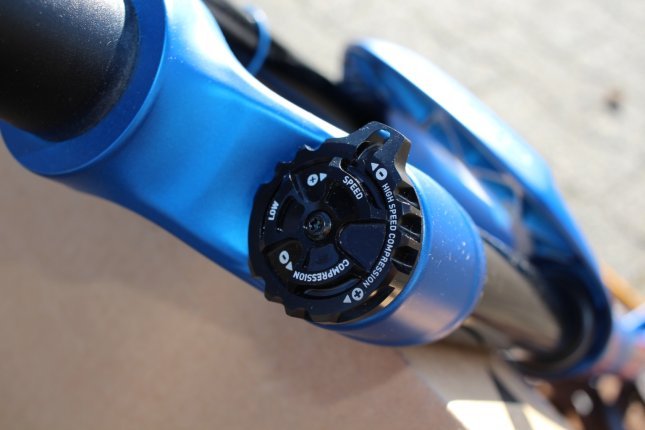
On top of the right leg you find the dial for high and low-speed compression.
The valve cap is massive. Great, that makes it easy to unscrew even with your gloves on and also harder to loose.
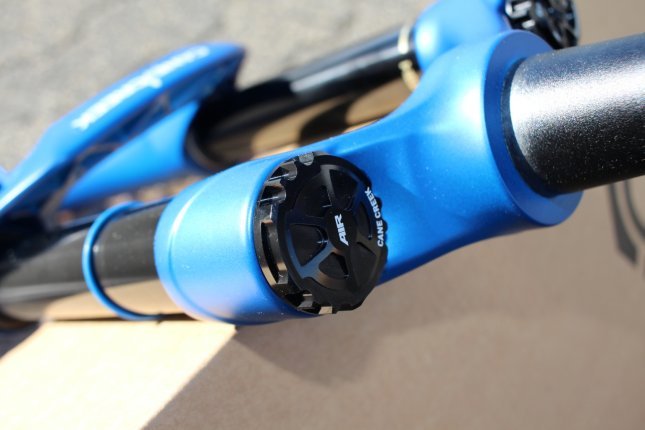
On the left stanchion you find the valve for air-coil adjustment.
The low-speed rebound-adjustment can be found at the bottom of the right stanchion. The bottom of the left one houses the negative air chamber. The positive and negative air chambers can be adjusted independently as the following video shows.
Stylish: The D-Loc Thru-Axle
The golden axle certainly sticks out, especially combined with the blue fork. The squared design with rounded edges saves valuable weight. The axle’s lock function adds security. It keeps the axle from falling out, should the quick release open.
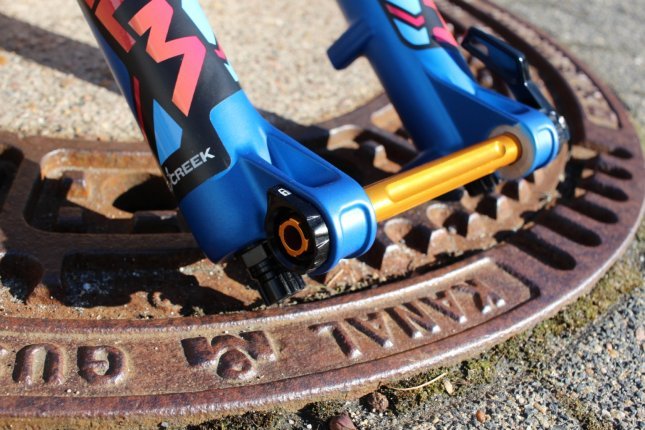
The D-Loc thru-axle comes with a quick release.
Attention to detail
The brake hose routing is an example of top-quality craftsmanship.
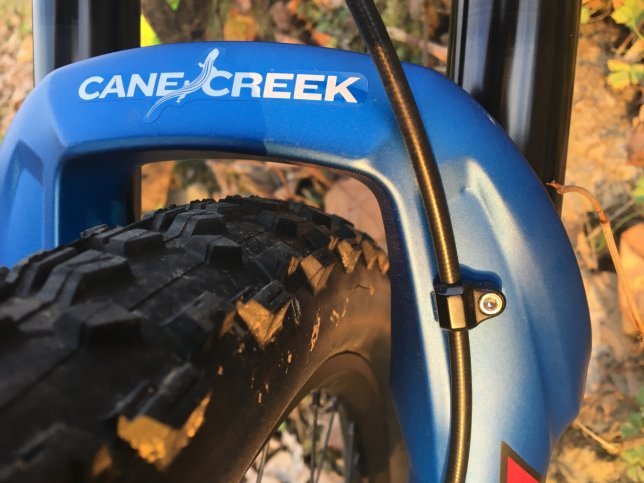
The brake hose routing is an example of top-quality craftsmanship.
Let’s get it on – Taking life by the Helm
I weigh in at 80 kg at 184 cm. I set the Helm at 30% SAG, just like my Fox for, which meant 80 PSI in case of the Helm. Once you have filled the fork with air, the negative air chamber has to be adjusted. This can be done by pushing a button at the bottom of the left leg.
The above set-up made for a very comfortable ride. The fork simply took care of business. In comparison with my Fox 36, I had to be a lot less active on the bike to reach the same level of comfort. The Helm did all the work for me. It’s more forgiving, be it big hits or constant small bumps.
Benny's verdict:
My verdict after a few hours on the trail: Give me more. The Helm adds a level of comfort and security, which the rider then can convert into additional speed.

